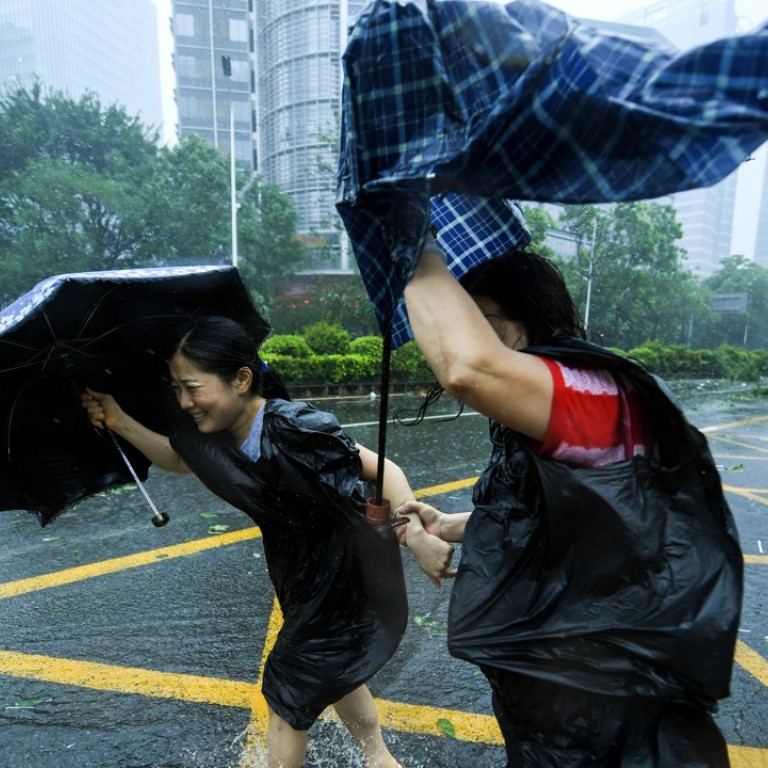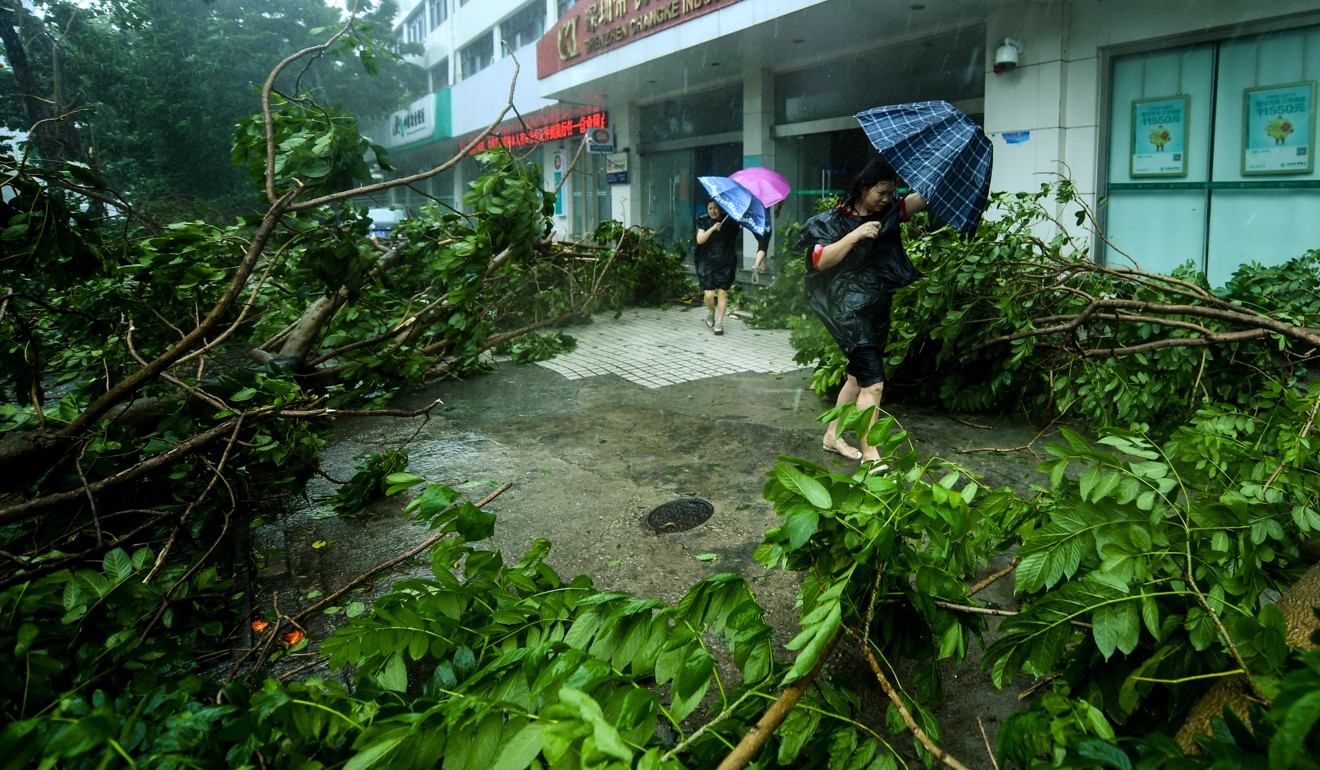
Southern China’s Pearl River Delta shuts down as Typhoon Mangkhut kills at least two in Guangdong
Flights and trains halted, roads and businesses shut down and residents told to stay indoors as powerful storm sweeps through region
Transport links in China’s Greater Bay Area were shut down on Sunday as Typhoon Mangkhut grounded nearly all flights and stopped intercity train and bus services from running.
As of 8.00pm, there were at least two deaths caused by the storm in Guangdong, China’s state television reported.
All major mainland cities in the Pearl River Delta were in emergency mode on Sunday afternoon as Mangkhut approached with the main roads and bridges connecting these cities shutting down at noon.
Restaurants, shops and commercial businesses were closed and SF Express, the delivery service firm, said it had suspended its services in most parts of Guangdong and Hainan.
The city of Zhuhai, which neighbours Macau, imposed citywide traffic controls to ensure there were “no people on the streets and no cars on the roads” while police officers persuaded a South China Morning Post reporter to stay indoors.
The city’s Grand Bay View Hotel was forced to evacuate guests whose rooms were close to the coast and moved them to a building away from the shore.
Hotel staff also called every room, asking guests to close all doors and notify hotel staff if any of the windows broke.
Serious flooding and swaying buildings as Hongkongers battle monster storm
In Shenzhen, the city across the border from Hong Kong, metro services were suspended as of midnight with no word as to when they would resume.
All flights into and out of the city were cancelled for the day, while at Guangzhou airport services were suspended between noon on Sunday until 8am on Monday.

Rail services from Guangdong were also halted for the day.
Neither of the two nuclear power plants along the route of the typhoon, Taishan Nuclear Power Plant and Yangjiang Nuclear Power Station, both in Guangdong province, reported any incidents.
However, 73 people on board an engineering boat had a lucky escape after it became unmoored on a river in Huizhou.
The Shenzhen Maritime Safety Administration said it had eventually been secured and all those on board were safe.
In another incident, the ground floor of Sheraton Dameisha Resort became flooded after rising sea levels smashed doors, but no injuries were reported.
Benny Shi, a banking executive from Beijing, said he had been trapped in a Shenzhen hotel for the day and had to postpone his meeting with a client in Guangzhou.
“As a northerner, it’s my first real experience with a typhoon,” he said. “I never thought it would be impossible to travel from Shenzhen to Guangzhou.”
On normal days, travel between the two cities is easy, with high-speed rail services running every half an hour, multiple bus routes and taxis for hire.
Super Typhoon Mangkhut death toll rises to 13 in the Philippines
Even local residents who are used to typhoons were shocked by the ferocity of the superstorm.
“I felt the building shaking and I heard the typhoon howl,” Deborah Dai, a Shenzhen resident living in Futian district said. “Some of my neighbours have left their apartments on the higher floor and sought shelter in basements.”
More than 1,500 temporary shelters opened in the cities of Guangzhou and Shenzhen, hosting more than 51,000 people, according to local news reports.
Internet users shared multiple videos and photos showing trees that had been uprooted and broken windows in high-rise buildings.

“I’m so worried the electricity will not be available tonight. I only have my mobile phone to link to the world and it will run out of power later,” Vivian Zhang, another Shenzhen resident, said.
“The window in my bedroom started leaking at about 2.30pm, and the windows are shaking,” said Li Jing from Shekou, the port area of Shenzhen. “It’s horrible.”
Mangkhut moved into western Guangdong later in the day, making landfall at Taishan at 5pm.
China’s National Meteorological Centre said the storm would continue to move northwest and its force would dwindle.


.jpg?itok=H5_PTCSf&v=1700020945)